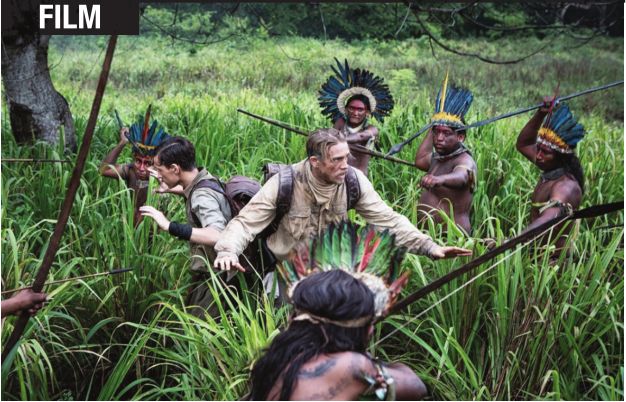
James Gray’s The Lost City of Z is cut from the same cloth of old-fashioned adventure films like The Treasure of the Sierra Madre and The Man Who Would Be King, a rousing jaunt that finds one man willingly facing impossible odds and the disdain of his colleagues while trying to find a lost Amazonian city. Based on the engaging history by David Grann, the film covers two decades in its hero Percy Fawcett’s life, one that sees him travel into the wilds of South America three times in an effort to find a civilization that only he is convinced exists, leaving behind a loving wife and family in the process.
Repeatedly passed over because of a stain on his family name, Lieutenant Percy Fawcett (Charlie Hunnam) is eager to find a way to advance through the ranks. An opportunity falls in his lap when he’s approached by England’s Royal Geographical Society to lead a small expedition to determine the actual border between Bolivia and Brazil. Seems a war between the two countries (which would staunch the flow of rubber to the rest of the world) is brewing, the true boundaries of these nations being the central question. He sets out with guide Henry Costin (a nearly unrecognizable Robert Pattinson) and a handful of aides and is quickly fascinated by the region of Amazonia he’s been sent to chart. During one of the group’s last stops, they stumble upon shards of pottery and other indications that a city might have once existed in the jungle wilds. Unfortunately, they don’t have the time to explore this any further, yet the idea takes hold, and Fawcett ends up returning three times over the course of 20 years to find what he’s come to call the city of Z.
Comparisons to Aguirre, the Wrath of God and Apocalypse Now are inescapable and perhaps welcome by Gray, as each journey Fawcett takes leads him further and further from civilization and its mores as he plunges deeper and deeper towards what he hopes will be a hidden Eden. Ultimately, his longsuffering wife Nina (Sienna Miller), who raises their two children alone, comes to see him as a stranger, as do his colleagues. However, the suggestion is that Fawcett has transcended them somehow, having shaken off traditional material pursuits, coming to some deeper realization where life and existence is concerned. Hunnam is quite good at conveying this, transforming over the course of the film from a man eager for personal glory to one governed by a Zen-like approach to life.
Shooting on location in Colombia, Gray drops the viewer into this magical, dangerous place, seducing us with its beauty yet never holding back in showing the predators who lurk there or the privations Fawcett and his crew suffers. This is effective in helping us appreciate the character’s fervor – while he may be in constant peril, knowing you’ve survived this harsh environment has its own reward.
At times, the movie has a fragmented feel to it – which is inevitable with any film that covers such a long period of time – and the climax does come off as a bit rushed and abrupt. Still, this is an impressive piece of old-fashioned filmmaking that powerfully explores man’s need to conquer not simply his surroundings but any demons or insecurities that lie within.
Contact Chuck Koplinski at [email protected].
For a review of King Arthur: Legend of the Sword visit the Cinemascoping blog at http://illinoistimes.com.